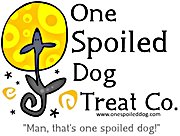Dogs are wonderful companions, but sometimes they can develop habits that are frustrating and even damaging to your home. Chewing on furniture, digging up the yard, and excessive barking are just a few examples of the trouble dogs can get into. The good news is that many of these behaviors can be prevented or managed with the right strategies. In this article, we will cover the common reasons behind destructive behavior in dogs and share practical tips to help you prevent it.
Understanding Why Dogs Display Destructive Behavior
Before jumping into solutions, it is important to understand why dogs act out in the first place. They are not trying to be spiteful or cause trouble. Most destructive behaviors are linked to instincts, emotions, or unmet needs. Some of the most common causes include:
- Boredom: Dogs need both physical and mental stimulation. Without it, they may find their own ways to stay busy, often through behaviors we would prefer they avoid.
- Anxiety or Stress: Fear, separation anxiety, and general stress can drive dogs to chew, dig, or bark excessively as a coping mechanism.
- Lack of Training or Boundaries: Dogs that have not been properly trained may not know what is acceptable behavior. Without clear guidance, they might resort to chewing on anything they can find.
- Excess Energy: High-energy dogs need an outlet for all that excitement. Without enough physical exercise, they may become destructive.
- Teething: Puppies chew to help soothe their gums during the teething process. If not managed properly, this can lead to damaged furniture and belongings.
Now that we know the reasons behind these behaviors, let’s explore how to prevent and manage them effectively.
1. Provide Plenty of Physical and Mental Stimulation
One of the best ways to curb destructive behavior is by making sure your dog has enough exercise and mental challenges each day.
- Daily Walks and Playtime: Tailor your dog’s exercise routine to their breed, age, and energy level. Some dogs need long walks, runs, or vigorous play to stay happy and balanced.
- Interactive Toys: Toys that make your dog think, like puzzle toys or treat-dispensing toys, are great for keeping them busy. Durable chew toys also help satisfy their natural urge to chew in a healthy way.
- Training Games: Teaching your dog new tricks or playing games like hide-and-seek can work their brain and strengthen your bond at the same time.
2. Create a Routine and Structure
Dogs feel more secure and relaxed when they know what to expect each day. A predictable routine can help prevent anxiety and the unwanted behaviors that come with it.
- Consistent Feeding Times: Feed your dog at the same times every day to create a sense of stability.
- Scheduled Walks and Play Sessions: Make daily exercise a non-negotiable part of your routine to help manage your dog’s energy levels.
- Practice Alone Time: If your dog struggles when left alone, start by leaving for short periods and gradually extend the time. Leave safe toys or treats to keep them occupied while you are gone.
3. Use Crate Training for Safety and Comfort
A properly introduced crate can be a helpful tool for managing destructive behavior, especially when you are not home.
- Positive Association: Treat the crate as a cozy and inviting space, never as a punishment.
- Introduce Slowly: Encourage your dog to spend time in the crate by offering treats and praise. Build up their comfort level gradually.
- Safety When Away: When you leave, putting your dog in their crate can prevent them from chewing or digging while you are not there to supervise.
4. Redirect Destructive Behavior
If you catch your dog in the middle of a destructive act, redirect them immediately to a more appropriate behavior.
- Offer Alternatives: If they are chewing something they should not, calmly offer a chew toy instead. Praise them when they accept the toy.
- Use Positive Reinforcement: Reward good behavior consistently. Treats, toys, and affection help reinforce what you want to see.
- Interrupt and Guide: If your dog is digging where they shouldn’t or chewing the wrong thing, interrupt with a firm but gentle “no,” then show them a better activity, like playing with a ball or chew toy.
5. Address Anxiety and Stress
If anxiety is driving your dog’s destructive behavior, tackling the root cause is crucial.
- Work on Separation Anxiety: Gradually help your dog adjust to being alone. Short separations that build up over time can make a big difference. Calming aids like pheromone diffusers, anxiety wraps, or soothing music can also help.
- Create Safe Spaces: Set up a quiet, comfortable area where your dog can retreat when they feel overwhelmed.
- Seek Professional Help: For dogs with serious anxiety issues, a professional trainer or behaviorist can offer a customized plan to support your dog’s emotional health.
6. Stay Consistent with Training
Consistency is one of the most important factors when it comes to preventing destructive behavior. Everyone in the household should be on the same page when it comes to rules and expectations.
- Set Clear Rules: Make sure your dog knows what is allowed and what is not. If you do not want them on the couch, for example, be consistent every time.
- Reward Positive Actions: Always take the time to praise and reward your dog when they make good choices. Positive reinforcement builds better habits over time.
Final Thoughts
Preventing destructive behavior in dogs takes patience, consistency, and a good understanding of your dog’s needs. By offering plenty of exercise, mental stimulation, structure, and positive reinforcement, you can help your dog become a well-behaved and happy member of your family. If you are struggling despite your best efforts, do not hesitate to reach out to a professional for support. With the right approach, you and your dog can enjoy a peaceful and fulfilling life together.
